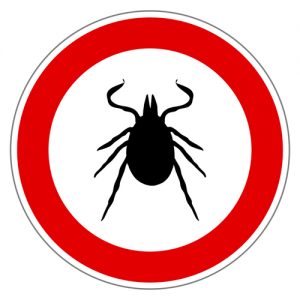In the News – Acorns Say 2012 Will Be a Bad Year for Lyme Disease
By Chris Williams on February 14, 2012.
Biologists know that when favorable conditions result in a heavy crop of tree nuts, there’s a corresponding increase in rodents and other animals that feed on these nuts. There is also a correlation between this increase in nuts, the increase in rodents, and an increase in certain diseases in humans.
Several years ago, researchers at the Institute of Ecosystem Studies in Millbrook, NY spread four tons of acorns on experimental plots. They found that the number of white-footed mice soared…thanks to the abundance of food. Black-legged ticks (the vector of Lyme disease) also increased because deer carrying the ticks were attracted to the acorn surplus. Because mice carry the disease organism and ticks spread Lyme disease to people, a bumper crop of acorns can signal an upcoming increase in Lyme disease.
 This is exactly what happened in the Northeast in the summer and fall of 2010. The fall of 2010 was a record year for acorn production with an average of 250 pounds per tree. In an average year, an oak tree produces about 25 to 30 pounds of acorns. Also, all four major oak species–red oak, black oak, white oak, and chestnut oak– produced a glut of acorns at the same time, a rare occurrence. In 2010, experts predicted that the huge glut of acorns would bring about a population boom for white-footed mice in 2011. And that this would mean an increase in the survival and infection of black-legged ticks who feed on the mice. They said that those mouse-fed larval ticks would sit on the forest floor for a year, finally emerging as hungry nymphs in the summer of 2012.
This is exactly what happened in the Northeast in the summer and fall of 2010. The fall of 2010 was a record year for acorn production with an average of 250 pounds per tree. In an average year, an oak tree produces about 25 to 30 pounds of acorns. Also, all four major oak species–red oak, black oak, white oak, and chestnut oak– produced a glut of acorns at the same time, a rare occurrence. In 2010, experts predicted that the huge glut of acorns would bring about a population boom for white-footed mice in 2011. And that this would mean an increase in the survival and infection of black-legged ticks who feed on the mice. They said that those mouse-fed larval ticks would sit on the forest floor for a year, finally emerging as hungry nymphs in the summer of 2012.
It seems that all of that did happen. But what wasn’t expected was a dramatic drop in acorn production in 2011 when a typical tree shed less than half a pound of seeds. It’s normal for acorn production to fluctuate from year to year. Then episodically, oaks produce a bumper crop of acorns, known as a “mast year” as they did in 2010. But experts say they’ve never seen such a huge abundance of acorns (2010) followed immediately by such a steep drop (2011).
It’s predicted that the severe shortage of acorns in 2011 will have a cascade of effects, culling populations of squirrels, field mice, and ground-nesting birds. And because the now-overgrown population of white-footed mice will crash due to the acorn shortage, it’s predicted that legions of ticks (some infested with Lyme disease) will be aggressively looking for new hosts, like humans this summer. “We expect 2012 to be the worst year for Lyme disease risk ever,” said Richard S. Ostfeld, at the Cary Institute of Ecosystem Studies in Millbrook, NY. (Source: The New York Times, Dec. 2, 2011)